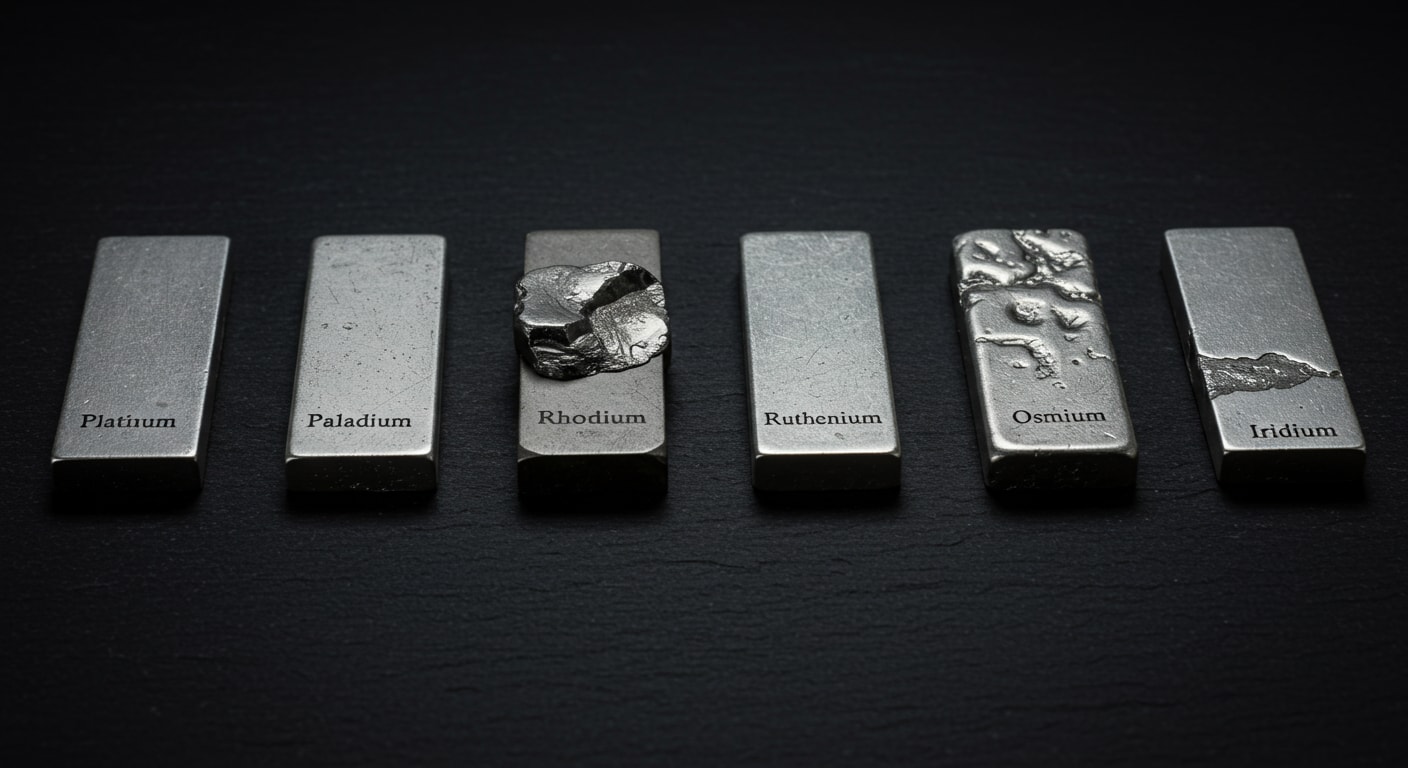What Are the Platinum Group Metals? | PGMs Explained

Known for their valuable chemical properties, the platinum group metals (PGMs) consist of six different and unique metallic elements. With distinctive properties, these metals are part of the periodic table.
This guide will go over what the various platinum group elements are and what makes them incredibly resistant to chemical attacks (even nitric acid!).
What Are the Six Platinum Group Metals?
The PGMs consist of six different individual platinum group metals, including the following:
- Platinum metal (Pt)
- Palladium (Pd)
- Rhodium (Rh)
- Ruthenium (Ru)
- Iridium (Ir)
- Osmium (Os)
These metals have several distinctive properties, including high melting points and corrosion resistance. However, only platinum, palladium, and rhodium are used the most, while the three other platinum group metals are valuable for specialized applications.
Are Platinum Group Metals Considered Precious Metals?
A “precious metal” label is given to elements that are rare and have a high economic value alongside exceptional physical and chemical properties. Under this definition, platinum group metals are regarded as precious metals just like gold and silver. Here’s a full list of precious metals.
PGMs are incredibly rare and difficult to extract. This makes their production expensive, which can drive up costs.
Interestingly enough, for a long time, the Spaniards, who called the metal “platina,” or “little silver,” regarded platinum as an unwanted by-product of silver.
Due to their remarkable catalytic abilities, excellent high-temperature characteristics, and other distinctive properties, platinum group elements play a vital role in the advancement of modern technology and several industries, unlike other metals.
What Is the Most Expensive Platinum Group Metal?
Rhodium metal is considered to be the most expensive platinum group metal. Due to its high demand across the automotive industry, this precious metal holds a higher value than other PGMs.
There are several reasons that can affect the cost of rhodium, some of which include the following:
- Limited rhodium supply
- Mine production
- Increased demand
While palladium is also expensive, it doesn’t come anywhere near the high price rhodium demands. Another thing to note is that even though there is an increase in platinum demand across the world, the price still doesn’t peak as rhodium, as it’s not as complicated to mine.
Where Are Platinum Group Metals Found?
You can find platinum group metals in mineral deposits around the world. After a geological survey in 2007, the US government published the Mineral Commodity Summaries report. It revealed South Africa as the world’s largest producer of PGMs, with the largest mineral deposit located in the Bushveld Igneous Complex.
What’s interesting about platinum group metals is that they are often found together in the same mineral deposits. In other regions like Norilsk in Russia and in the Ural Mountains, PGMs are a by-product of copper and nickel mining.
There is also a growing presence of PGMs across South America, especially the platinum-bearing river sands of Brazil and Peru. While PGM mining is popular in South Africa, various other countries have started studying and exploring platinum mining.
What Are the Industrial Applications of Platinum Group Metals?
Due to their unique properties, there is widespread use of platinum group metals across many different industries. Whether it’s platinum-rich alloys or palladium in its natural form, PGMs are used in the following:
- Catalytic converters to reduce harmful emissions from vehicle exhaust
- Fuel cells for converting hydrogen into electricity in fuel cell electric vehicles
- Permanent magnets in direct-drive wind turbines for power generation
- Electronic and dentistry components
- Medical devices that help maintain human health
- Electrochemical applications, including electrodes and sensors
